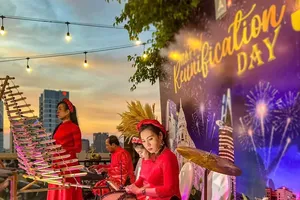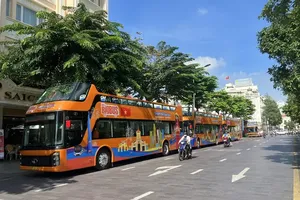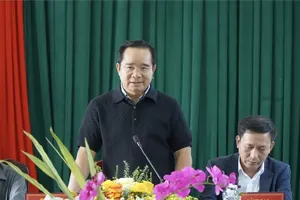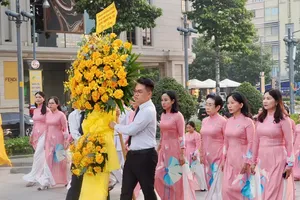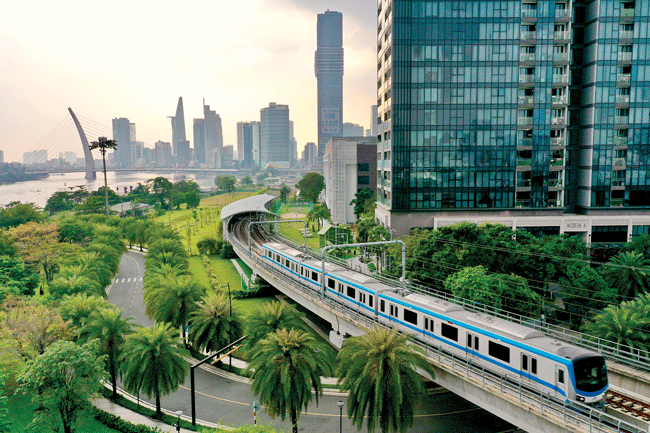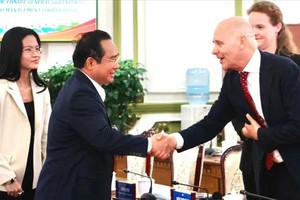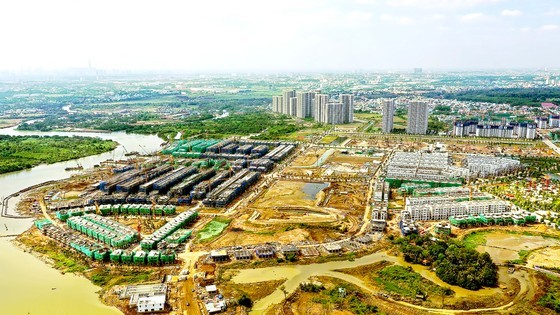 |
One of the major projects along Ring Road No.3. (Photo: SGGP) |
Seeing the importance of Ring Road No.3, many economic experts have suggested that HCMC and those provinces along this route apply the Transit-Oriented Development (TOD) model and form chains of urban areas to serve the public.
In a meeting to accelerate Ring Road No.3 building project this December, most participants agreed that besides boosting inter-regional traffic, the route offers a great chance to develop social housing thanks to its available land resource. This is comparative with the global urbanization trend.
However, despite many efforts, in the 2015-2020 period, HCMC could only complete 15,000 such apartments. This signals an unbalance, unsustainability between supply and demands in HCMC and Vietnam in general, where there is a serious lack of affordable accommodation but a surplus of luxury one.
Particularly, in 2020, the percentage of reasonably-priced apartments accounted for only 1 percent of all houses released into the market. A year later, the situation was not brighter, and affordable accommodation just occupied 26 percent.
Meanwhile, the demands for social housing from 2011-2020 came to 134,000 apartments. Nevertheless, only about 15,000 in 14 projects have been finished so far, which was only 11 percent of the demands.
Aware of that, the municipal authorities have continuously called for investments from real estate businesses in social housing projects, yet not many have responded since the land resource with suitable prices for such housing is not rich, not to mention complicated investment procedures.
Le Thanh Construction – Trading Co. Ltd., a unit famous for building social housing in HCMC, has had to continuously ask for support for its current construction projects, some of which cannot balance between the company’s profits and the public’s benefits.
Doan Diep Thuy Duong from the Urban Studies Department of University of Social Sciences and Humanities under Vietnam National University-HCMC said that in accordance with the inter-regional development direction, social housing along Ring Road No.3 is able to attract buyers because it has a high potential of linking different urban areas and regions.
However, it is important that HCMC make comprehensive planning (exact location, scale, connection possibility) for such housing type, along with necessary public facilities nearby. This information will become the basis for real estate businesses to select suitable projects to invest in, and for functional agencies to logically manage those projects.
Nguyen Binh Minh, also from the Urban Studies Department, shared that when planning for social housing along Ring Road No.3, HCMC should consider these residential areas as its satellite urban areas as stated in the city’s construction planning and regional planning: Nhon Trach (in Dong Nai Province), Thuan An City (Binh Duong Province), Northwest of Cu Chi District (HCMC), Duc Hoa – Duc Hue (Long An Province).
Dr. Du Phuoc Tan from HCMC Institute of Development Studies shared another view that the land resource of the city has become scarcer while that of neighboring provinces is still rich. Therefore, inter-regional connection can properly address such land shortage to build social housing for HCMC. Yet this plan should be approved soon to avoid land price rises when Ring Road No.3 is completed.
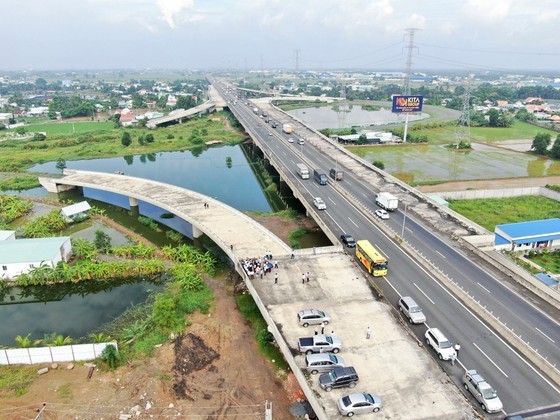 |
Ring Road No.3 – the part of Ben Luc District (Long An Province) connecting to HCMC-Trung Luong Expressway. (Photo: SGGP) |
Related to land resource limitation, the HCMC Department of Natural Resources and Environment has just proposed to HCMC People’s Committee to retrieve and then organize a bidding session for a land lot in the city alongside Ring Road 3. This 2,000-hectare lot is mostly agricultural land. The money earned from bidding of this lot, which is estimated to be more than VND100 trillion ($4.22 billion), can be used for reinvestment. The lot is suggested to be divided into smaller pieces for gradual bidding.
Since the success chance of this bidding is quite high, HCMC should urgently finish the 1/500 planning for this large lot along Ring Road No.3, including detailed space-landscape designs, socio-economic development goals, demands, construction density, building height and allowed floor number, green space, traffic systems. These data are valuable for bidders to consider before entering the bidding session.
Assoc. Prof. Dr. Nguyen Minh Hoa, Vice Chairman of HCMC Urban Planning and Development Association, believed that many investors are interested in this 2,000-hectare land lot since this is the ‘golden’ site with promising profits. What the city should do is to introduce suitable mechanisms to control and monitor the construction and exploitation process after bidding to avoid negativities. Also, since the land is also located in the three provinces of Binh Duong, Dong Nai, and Long An, there must be consistency in regulations among these regions; otherwise, certain parts of this lot will be bustling while others will be rather gloomy.
Nguyen Anh Dao from the Center for Socio-Economic Simulation and Forecasting (under HCMC Institute of Development Studies) commented that once finished, Ring Roads No.3 and No.4 will reduce the traveling time between HCMC and its neighboring provinces. This is such a great advantage for the construction of social housing in other provinces as the land resource of HCMC is limited.
HCMC has already introduce a policy for commercial accommodation projects to allocate a certain proportion of their project site for social housing development. Nevertheless, this policy has not lived to its expectation, leading to a clearer unbalance between luxury and affordable apartments since 2018. The decision to construction social housing along Ring Road No.3 in a methodical manner is obviously a rational one.
